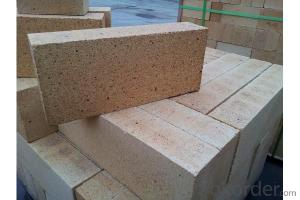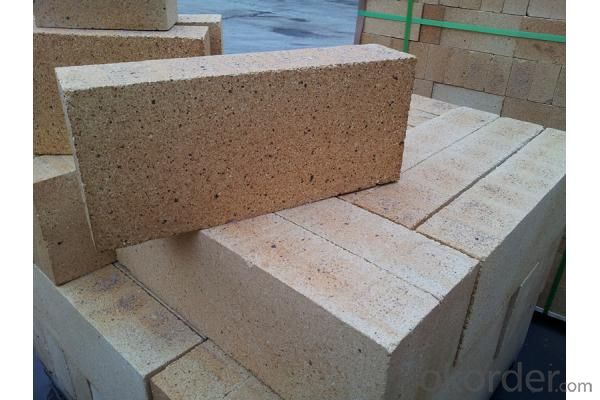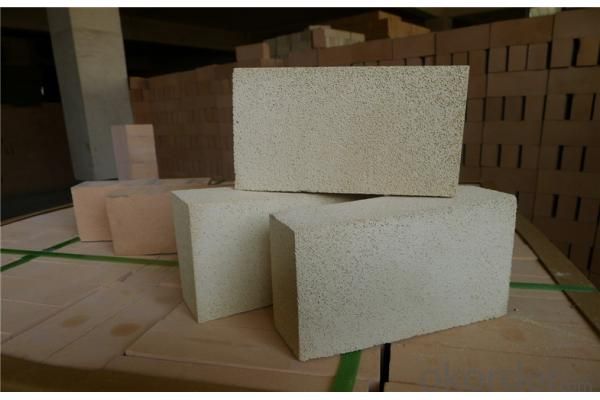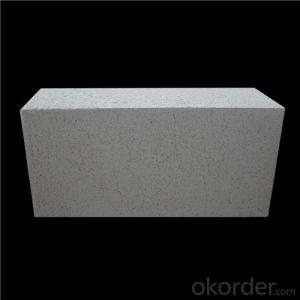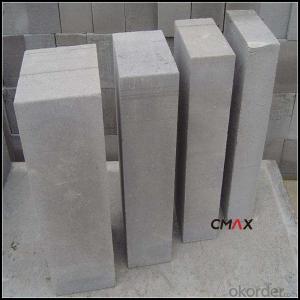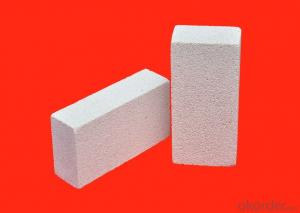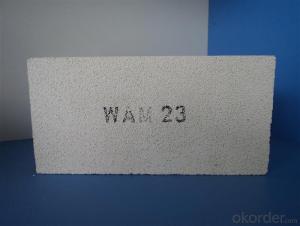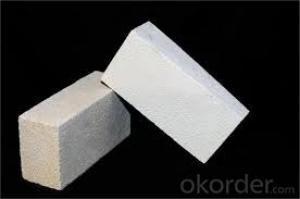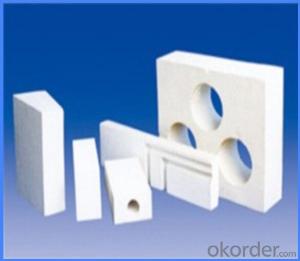Insulating Fire Brick - Silimanite Brick - Refractory Tape
- Loading Port:
- Tianjin
- Payment Terms:
- TT OR LC
- Min Order Qty:
- 10 m.t.
- Supply Capability:
- 10000 m.t./month
OKorder Service Pledge
OKorder Financial Service
You Might Also Like
CNBM conforms strictly to the requirements of ISO 9000 quality control system during the production. MSDS is also available if you want. The thermal insulation fire clay brick meet with the requirements of ASTM & JIS standards. So please stay cool with our quality.
Application
Insulating Fire Brick are used for the lining of converter, alternating current arc furnace, direct Current arc furnace and the ladle slag line, etc.
Insulating Fire Brick Technical index
Brand Quality | JM23 | JM26 | JM28 | JM30 | JM32 | |
Bulk Density (g/cm3) | 0.52 | 0.78 | 0.88 | 1.03 | 1.25 | |
1.2 | 1.6 | 2.1 | 2.5 | 3.5 | ||
Modulus of Rupture (Mpa) | 0.9 | 1.4 | 1.6 | 2.1 | 2.1 | |
-0.5 | 1400℃ -0.4 | 1510℃ -0.5 | 1620℃ -0.9 | 1730℃ -0.9 | ||
Thermal Expansion 1100℃(%) |
0.5 |
0.7 |
0.8 |
0.9 |
1.1 | |
Thermal conductivity(W/m.k)
| 400℃ | 0.14 | 0.27 | 0.32 | 0.41 | 0.49 |
600℃ | 0.16 | 0.29 | 0.34 | 0.43 | 0.50 | |
800℃ | 0.18 | 0.31 | 0.36 | 0.44 | 0.51 | |
1000℃ | 0.20 | 0.33 | 0.38 | 0.45 | 0.53 | |
Al2O3 | 37 | 58 | 67 | 73 | 77 | |
Fe2O3 | 0.7 | 0.7 | 0.6 | 0.5 | 0.4 | |
Equipment
1 unit of Ceramic Abrasive (SG Abrasive) pilot production line
2 units of Compact grain Abrasive pilot production lines
1 unit of high-end coated abrasives (abrasive cloth) production line
2 units of Boron Carbide production lines
3 large flexible crushing and sieving lines for grit production lines
2 units of 2000KVA furnaces for Boron Carbide fusion
6 units of 5000KVA-10000KVA dumping type electric arc furnaces for Brown Fused Alumina fusion
Company Advantage
(1)Long Insulating Fire Brick manufacture history: 25 years manufacturer
(2)Advanced equipment
(3)Diversification of production standards: ISO ANSI FEPA JIS ASTM
(4)Flexible payment: T/T L/C D/P D/A
(5)Professional marketing team and after-sale service
(6)Free sample
FAQs
Q1 |
What’s the transport method? |
A1 | FCL delivery goods with wooden pallet or wooden case by sea; If LCL delivery, must with wooden case; Sometimes need open top, flat rack or bulk cargo. |
Q2 |
What’s the required payment term? |
A2 | Generally 30% TT as the prepayment, 70% TT before delivery. If need, 100% Irrevocable Letter of Credit or negotiation. |
Q3 |
Which country are our products exported to? |
A3 | Apart from entire Chinese market, the US, Russia, Japan, Korea, Australia and some Southeast Asian Nations. |

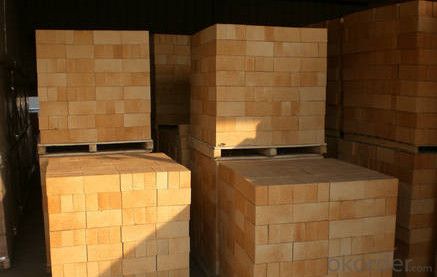
- Q: Can insulating fire bricks be used in thermal oxidizers?
- Yes, insulating fire bricks can be used in thermal oxidizers. These bricks are designed to withstand high temperatures and provide excellent insulation, making them suitable for use in thermal oxidizer units. They help to maintain and distribute heat evenly, enhancing the efficiency and performance of the thermal oxidizer system.
- Q: Are insulating fire bricks resistant to moisture or water damage?
- Yes, insulating fire bricks are resistant to moisture or water damage. They are designed to withstand high temperatures and do not absorb water, making them a suitable choice for applications where moisture or water exposure is a concern.
- Q: Can insulating fire bricks be used in thermal power plants?
- Indeed, thermal power plants can utilize insulating fire bricks. These bricks are specifically engineered to furnish thermal insulation and withstand elevated temperatures, rendering them apt for deployment in thermal power plants. They find utility in diverse sections of the plant, including the lining of boilers, furnaces, and kilns, wherein they play a pivotal role in curbing heat dissipation and augmenting the overall energy efficiency of the facility. Furthermore, these bricks possess a lightweight construction and exhibit commendable thermal shock resistance, enabling them to endure the drastic temperature oscillations that transpire during power plant operations.
- Q: Are insulating fire bricks resistant to impact or mechanical stress?
- Yes, insulating fire bricks are resistant to impact and mechanical stress. Insulating fire bricks are made from lightweight refractory materials that are designed to withstand high temperatures and thermal shock. These bricks are specifically engineered to have a high resistance to mechanical stress and impact, making them suitable for various applications where they may be subjected to external forces or pressure. Their structural integrity and durability allow them to maintain their shape and thermal insulation properties even when exposed to mechanical stress or impact, making them an ideal choice for use in furnaces, kilns, and other high-temperature environments.
- Q: How do insulating fire bricks contribute to energy efficiency?
- Insulating fire bricks are a type of brick with high thermal resistance, which means they are excellent at preventing heat transfer. This property makes them a valuable component in energy-efficient systems. One way insulating fire bricks contribute to energy efficiency is by reducing heat loss. These bricks have low thermal conductivity, which means they don't easily conduct heat. As a result, they can effectively insulate areas where high temperatures are present, such as furnaces, kilns, and fireplaces. By minimizing heat loss, insulating fire bricks help keep the heat generated in these systems contained, allowing them to operate more efficiently. Moreover, insulating fire bricks also help reduce energy consumption. As they limit heat transfer, less energy is required to maintain the desired temperature within a system. This is particularly important in industries where high temperatures are essential for operations, as it can lead to significant energy savings. By using insulating fire bricks, companies can reduce their energy consumption, resulting in lower utility bills and a reduced environmental impact. Additionally, insulating fire bricks contribute to energy efficiency by improving the overall performance of heating systems. By providing insulation, these bricks help maintain a consistent and controlled temperature within the system. This ensures that the heat is evenly distributed and that there are no energy wastages due to temperature fluctuations. As a result, systems equipped with insulating fire bricks can operate more efficiently and effectively. In conclusion, insulating fire bricks play a crucial role in enhancing energy efficiency. Their high thermal resistance properties help reduce heat loss, minimize energy consumption, and optimize the performance of heating systems. By incorporating insulating fire bricks, individuals and industries can enjoy significant energy savings while also promoting a greener and more sustainable approach to energy consumption.
- Q: Can insulating fire bricks be used as insulation for pizza ovens?
- Indeed, insulation for pizza ovens can be achieved by utilizing insulating fire bricks. Designed to endure high temperatures and offer remarkable thermal insulation, these bricks possess a low thermal conductivity property, enabling them to efficiently retain heat and inhibit its escape from the oven. Consequently, this aids in upholding a steady and elevated temperature within the pizza oven, facilitating even cooking and achieving crispy crusts. Furthermore, insulating fire bricks are lightweight and simple to install, rendering them a favored option for insulating pizza ovens.
- Q: Can insulating fire bricks be used in heat exchangers?
- Insulating fire bricks are indeed applicable for heat exchangers. Their design aims to provide exceptional thermal insulation, making them perfect for high-temperature scenarios like heat exchangers. These bricks are crafted from lightweight substances and possess minimal thermal conductivity, enabling them to effectively minimize heat loss or gain within the heat exchanger. Furthermore, insulating fire bricks exhibit remarkable resistance to thermal shock and can endure extreme temperatures, solidifying their reliability for heat exchanger applications. Ultimately, incorporating insulating fire bricks in heat exchangers can enhance energy efficiency and overall performance.
- Q: Can insulating fire bricks be used for high-temperature insulation?
- Absolutely, high-temperature insulation can be achieved with the use of insulating fire bricks. These bricks are specifically engineered to endure and provide insulation against elevated temperatures, making them exceptionally suitable for a wide range of high-temperature applications. Constructed from lightweight refractory materials, these bricks exhibit remarkable thermal conductivity properties, effectively capturing and hindering heat transfer. They find extensive utilization in furnaces, kilns, ovens, and other heating apparatuses that necessitate insulation against extreme temperatures. Capable of withstanding temperatures as high as 3000°F (1650°C), insulating fire bricks offer a dependable solution for high-temperature insulation requirements.
- Q: Are insulating fire bricks chemically resistant?
- Yes, insulating fire bricks are chemically resistant. They are composed of high-temperature materials that can withstand harsh chemical environments without undergoing significant chemical reactions or degradation. This resistance makes them suitable for various industrial applications where exposure to chemicals is a concern.
- Q: How do insulating fire bricks differ from regular fire bricks?
- Insulating fire bricks differ from regular fire bricks in terms of their composition and thermal properties. Insulating fire bricks are made from lightweight materials such as expanded clay, vermiculite, or perlite, which have high insulating properties. They have lower density and higher porosity compared to regular fire bricks, allowing them to retain heat better and provide superior insulation. Regular fire bricks, on the other hand, are made from dense materials like clay or silica, which provide better structural strength but have lower insulation capabilities.
Send your message to us
Insulating Fire Brick - Silimanite Brick - Refractory Tape
- Loading Port:
- Tianjin
- Payment Terms:
- TT OR LC
- Min Order Qty:
- 10 m.t.
- Supply Capability:
- 10000 m.t./month
OKorder Service Pledge
OKorder Financial Service
Similar products
Hot products
Hot Searches
Related keywords

